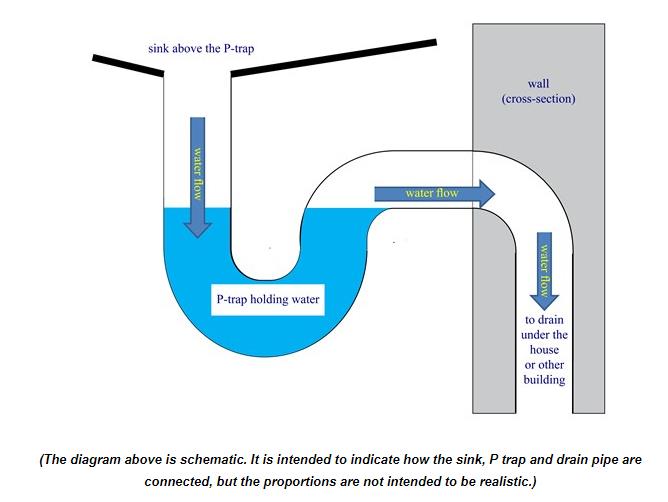
Environmental Health and Safety Bulletin: Dry Drain Traps and Odours
Check The Drain Traps!: Prevent sewer system odours from entering your work space
With the arrival of warm and dry weather, some buildings around campus may have issues with dry drain traps or p-traps. Most drains (sink and floor) will have a U shaped section in the pipe that would normally be filled with water. The water sitting in the pipe prevents odours from the sewer from entering into a building space. If a drain is not frequently used, the water sitting in the trap will evaporate allowing odours from the sewer system to enter the room.This can produce a variety of odours in the room or building.
The odours emanating from a dry trap may vary and present as:
- Sewage
- Rotten eggs or sulfur
- Musty or mouldy smells
How do you find out if the odour in your space is caused by a dry trap? Take a look at the drains around your area.
- Are there any sinks that have not been used in a while?
- Are there any floor drains that are almost never used?
- If you hold your hand over the drain, can you feel airflow?
These drains may have a dry trap that is allowing the odour to come up from the sewer. What can you do to fix and prevent dry traps?
- Try pouring a few cups of water down the drain or running the tap to ensure the trap is refilled.
- It can also be beneficial to include running the tap or running water down the floor drain weekly along with flushing eyewash stations and other regular maintenance in order to prevent a dry trap from occurring, particularly during the summer when there may be fewer people working on campus.
- If you find the drain is clogged, contact Physical Plant immediately.






